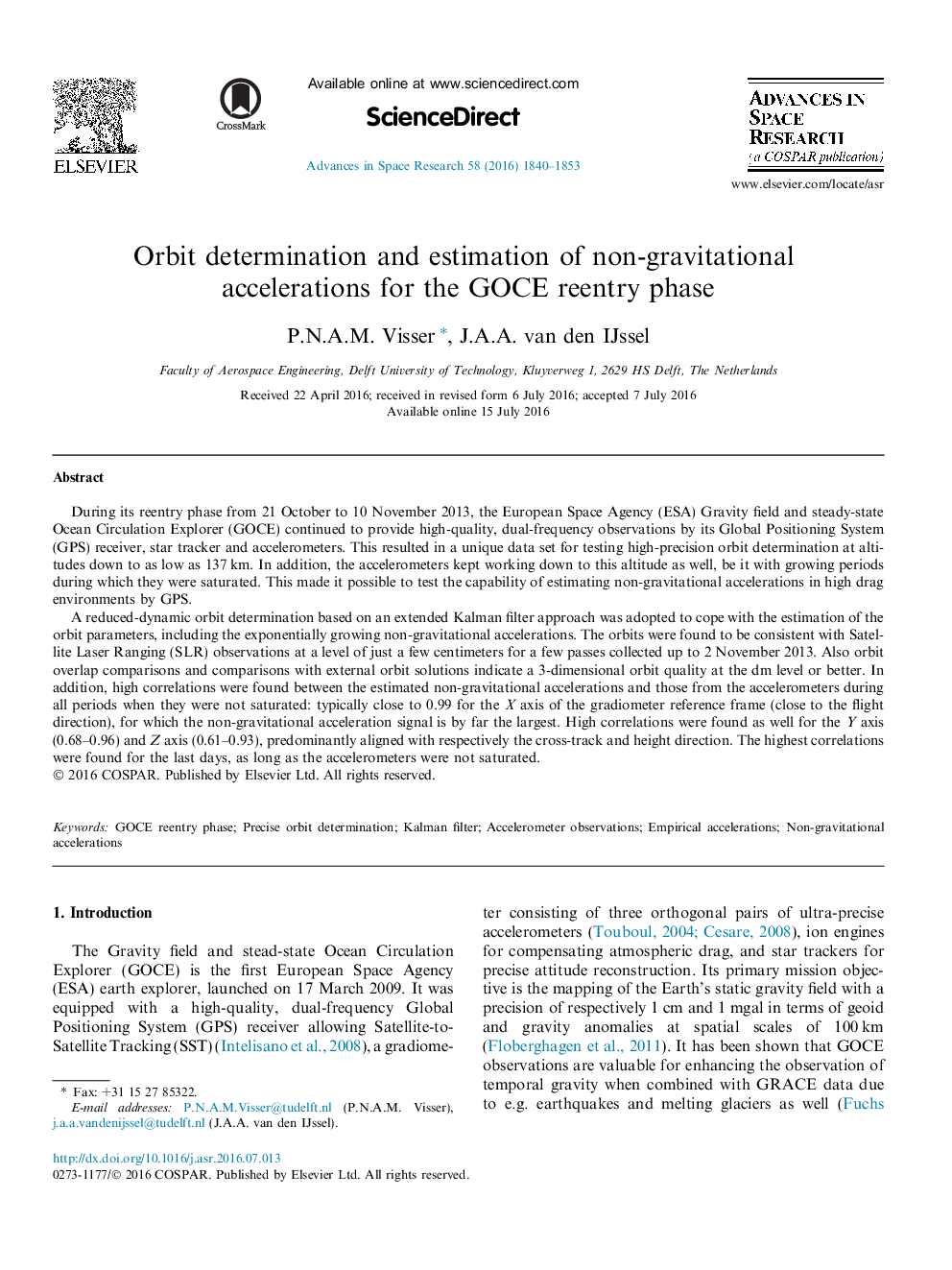| Article ID | Journal | Published Year | Pages | File Type |
|---|---|---|---|---|
| 5486616 | Advances in Space Research | 2016 | 14 Pages |
Abstract
A reduced-dynamic orbit determination based on an extended Kalman filter approach was adopted to cope with the estimation of the orbit parameters, including the exponentially growing non-gravitational accelerations. The orbits were found to be consistent with Satellite Laser Ranging (SLR) observations at a level of just a few centimeters for a few passes collected up to 2 November 2013. Also orbit overlap comparisons and comparisons with external orbit solutions indicate a 3-dimensional orbit quality at the dm level or better. In addition, high correlations were found between the estimated non-gravitational accelerations and those from the accelerometers during all periods when they were not saturated: typically close to 0.99 for the X axis of the gradiometer reference frame (close to the flight direction), for which the non-gravitational acceleration signal is by far the largest. High correlations were found as well for the Y axis (0.68-0.96) and Z axis (0.61-0.93), predominantly aligned with respectively the cross-track and height direction. The highest correlations were found for the last days, as long as the accelerometers were not saturated.
Related Topics
Physical Sciences and Engineering
Earth and Planetary Sciences
Space and Planetary Science
Authors
P.N.A.M. Visser, J.A.A. van den IJssel,
